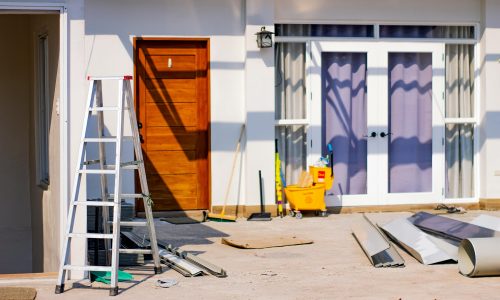
Do It Yourself Porch Plans: A Guide

Welcome to our guide on how to plan and build your own porch! Do It Yourself Porch Plans can be fantastic to work with, and a porch can be a great addition to any home, providing a comfortable space to relax and enjoy the outdoors. In this guide, we will go over the steps involved in planning and building a porch, including considerations for roof repair services, wood fence options, commercial land for sale, and composite deck builders. We will also discuss some additional features you may want to consider, such as roller shades and commercial door hardware, as well as the importance of budgeting for taxes and any necessary trailer parts.
Before we dig into some Do It Yourself Porch Plans, let’s talking about why porches matter.
The Imporch-tance of Porches
Porches are an often overlooked, yet incredibly important, feature of a home. They provide a space to relax and enjoy the outdoors, connect with neighbors and the community, and add value and charm to a property. Here are just a few reasons why porches are so important:
Relaxation and enjoyment of the outdoors: A porch provides a comfortable and convenient place to relax and enjoy the outdoors. Whether it’s reading a book, having a cup of coffee, or spending time with friends and family, a porch offers a peaceful retreat from the hustle and bustle of daily life.
They offer connection to the community. Porches are often a central gathering place for neighbors and the community. They provide a space for people to chat and socialize, fostering a sense of connection and community. This can be especially important in urban or suburban areas where outdoor space may be limited.
They offer increased property value. Porches can add significant value to a property. They can increase the overall square footage of a home, making it more desirable to potential buyers. They also add charm and character to a property, making it stand out from others on the market.
They offer energy efficiency. Porches can also provide energy savings by providing shade and protection from the elements. This can help to reduce the amount of energy needed to cool or heat a home, resulting in lower energy bills.
They offer increased curb appeal. A well-designed and maintained porch can greatly improve the curb appeal of a home. It can be the first thing a visitor sees when they approach the property, and a beautiful porch can create a positive first impression.
Overall, porches are a valuable and important feature of a home. They provide a space to relax and enjoy the outdoors, connect with the community, increase property value, and improve energy efficiency and curb appeal. If you’re considering building or renovating a porch, the investment is well worth it.
Now, it’s time to walk through some Do It Yourself Porch Plans!
Step 1: Determine the Purpose of Your Porch

Before you start planning and building your porch, it is important to think about what you want to use it for. Will it be a place to relax and enjoy the outdoors, or will it be used for entertaining guests? Knowing the purpose of your porch will help you determine the size and features you will need. The most important part of Do It Yourself Porch Plans is knowing why you’re building your porch in the first place.
It is also important to consider the location of your porch. Is it situated in a sunny or shady spot? How much privacy does the location offer? Will the location of the porch make it a natural gathering place for friends and family, or will it be more secluded and private?
Another important consideration is the materials and features you want for your porch. Do you prefer a traditional look with wood flooring and railings, or a more modern aesthetic with composite materials? Will you want to add a wood fence for privacy, or perhaps some roller shades for shade or protection from the elements? Don’t forget to budget for commercial door hardware and any necessary trailer parts for transportation and installation in your Do It Yourself Porch Plans.
Once you have determined the purpose, location, and materials for your porch, you will need to decide whether to hire a professional contractor or take on the project yourself. If you decide to hire a professional, be sure to research and compare different contractors to find the one that best fits your needs. If you decide to do it yourself, make sure to properly research and follow all necessary building codes and regulations.
Finally, it is important to budget for taxes and maintenance when planning and building a porch. This includes any applicable sales tax on materials and labor, as well as any property taxes that may be added as a result of the added value to your home. It is also important to budget for ongoing maintenance, such as roof repair services or upkeep of the wood fence and flooring.
With proper planning and execution, you can create a beautiful and functional porch that will provide years of enjoyment. Whether you use it as a peaceful retreat or a gathering place for friends and family, a porch can add value and charm to your home.
Step 2: Choose a Location

Once you have determined the purpose of your porch, the next step is to choose a location. Consider factors such as the size of your yard, the direction the porch will face, and the amount of sunlight it will receive. You should also consider the proximity to the best country club or private golf club in your area, as this may be a factor for resale value in the future. Do It Yourself Porch Plans are all about location, just like real estate.
When choosing a location for your porch, it is also important to consider the surrounding landscape and how it may impact the design and functionality of your porch. Will the location allow for easy access from the main living areas of your home, or will it require a separate entrance? Will the location provide a natural windbreak or protection from the elements, or will you need to install additional features such as a roof or roller shades to provide shelter?
It is also important to consider the view from the porch. Will it overlook a beautiful garden or landscaped area, or will it provide a view of the surrounding neighborhood or landscape? A porch with a pleasant view can greatly enhance the enjoyment of the space.
In addition to the size of your yard and the direction the porch will face, you should also consider the slope and elevation of the site. A porch built on a slope may require additional foundation work, while a porch built at a high elevation may offer a more expansive view.
Finally, consider the proximity to amenities such as the best country club or private golf club in your area. While this may not be a primary consideration for everyone, it can be a factor for resale value in the future.
By carefully considering these factors, you can choose the perfect location for your porch that meets your needs and enhances the enjoyment of your home.
Step 3: Select Materials and Features
Now we’re getting deep into your Do It Yourself Porch Plans. It’s time to start thinking about the materials and features you want for your porch. Some options to consider include wood for the flooring and railing, or composite materials for a more durable and low-maintenance option. You may also want to consider adding a wood fence for privacy, or installing roller shades for shade or to block out wind and rain. Don’t forget to budget for commercial door hardware, as well as any necessary trailer parts for transportation and installation.
When selecting materials and features for your Do It Yourself Porch Plans, it is important to consider your personal style and the overall design of your home. If you have a traditional home with wood siding and trim, wood flooring and railings may be a natural choice. Composite materials, such as fiberglass or plastic, are also a popular option for porch flooring and railings as they are durable and low-maintenance.
In addition to the flooring and railings, you may also want to consider adding a wood fence for privacy. A wood fence can provide a sense of enclosure and separation from the surrounding area, making the porch feel more like a private retreat. You may also want to consider installing roller shades for shade or to block out wind and rain. Roller shades can be easily rolled up or down as needed, providing versatility and convenience.
Don’t forget to budget for commercial door hardware, such as handles, locks, and hinges, as well as any necessary trailer parts for transportation and installation. These items may not be at the top of your list, but they are important for the overall functionality and durability of your porch.
By carefully selecting materials and features that suit your personal style and the design of your home, you can create a porch that is both functional and attractive.
Step 4: Hire a Professional or Do it Yourself

Depending on your skills and experience, you may choose to hire a professional contractor to build your porch, or you may decide to do it yourself. If you decide to hire a professional, make sure to research and compare different contractors to find the one that best fits your needs. If you decide to do it yourself, make sure to properly research and follow all necessary building codes and regulations.
We didn’t call this the Do It Yourself Porch Plans for nothing! We’re assuming you have what it takes.
That doesn’t mean you can’t use some help if you absolutely need it. When deciding whether to hire a professional contractor or take on the project yourself, it is important to consider your skills and experience, as well as the complexity of the project. If you have little to no experience in construction and the project involves complex elements such as foundation work or electrical wiring, it may be best to hire a professional. A professional contractor will have the necessary expertise and experience to complete the project safely and efficiently.
If you decide to hire a professional contractor, it is important to do your research and compare different contractors to find the one that best fits your needs. This may include getting references and reviews from previous clients, as well as obtaining estimates from multiple contractors to ensure you are getting a fair price.
If you decide to take on the project yourself, it is important to properly research and follow all necessary building codes and regulations. This may include obtaining the necessary permits, following proper safety procedures, and adhering to local zoning laws. It is also important to have a clear plan and budget in place, as well as the necessary tools and materials for the project.
Regardless of whether you decide to hire a professional or take on the project yourself, it is important to carefully consider your skills and experience, as well as the complexity of the project. By taking the time to plan and prepare, you can ensure a successful and enjoyable building experience.
Step 5: Budget for Taxes and Maintenance

When planning and building a porch, it is important to budget for taxes and maintenance. This includes any applicable sales tax on materials and labor, as well as any property taxes that may be added as a result of the added value to your home. It is also important to budget for ongoing maintenance, such as roof repair services or upkeep of the wood fence and flooring.
Building a porch can be a rewarding and enjoyable project that adds value and functionality to your home. By following these steps and considering factors such as roof repair services, wood fence options, and composite deck builders, you can create a porch that meets your needs and fits your budget. Don’t forget to budget for taxes and maintenance, and consider adding features such as roller shades and commercial door hardware for added convenience and functionality. With proper planning and execution, you can create a beautiful and functional porch that will provide years of enjoyment.
It’s time to roll out those Do It Yourself Porch Plans and get to work!




